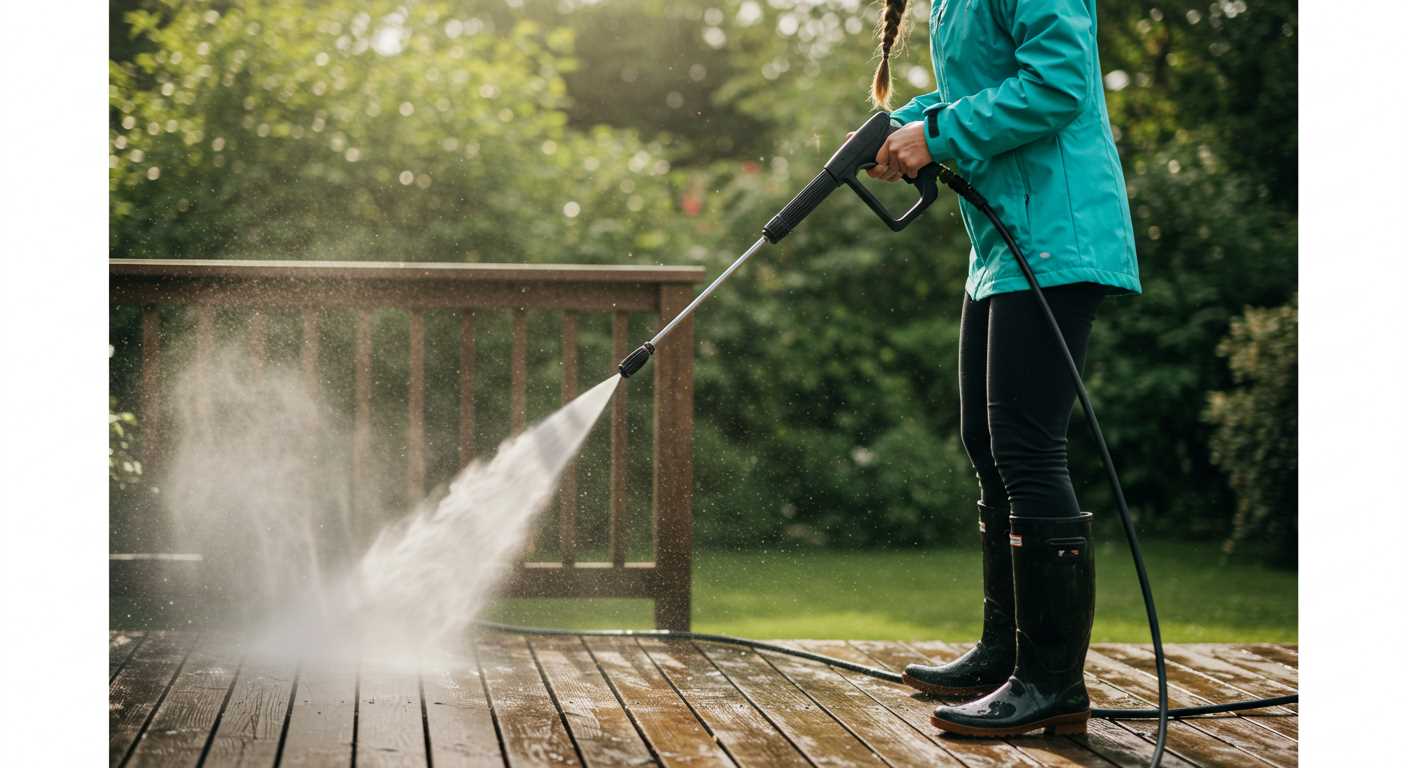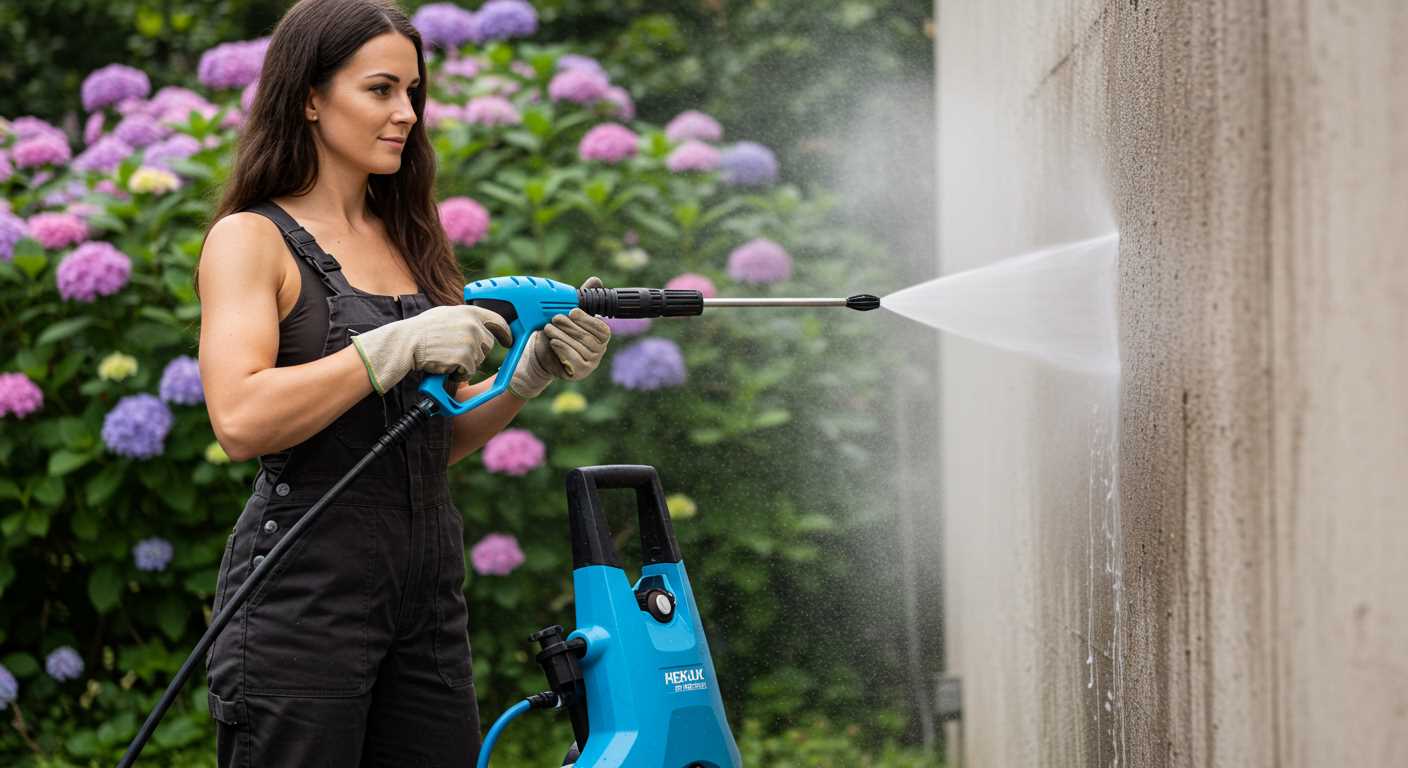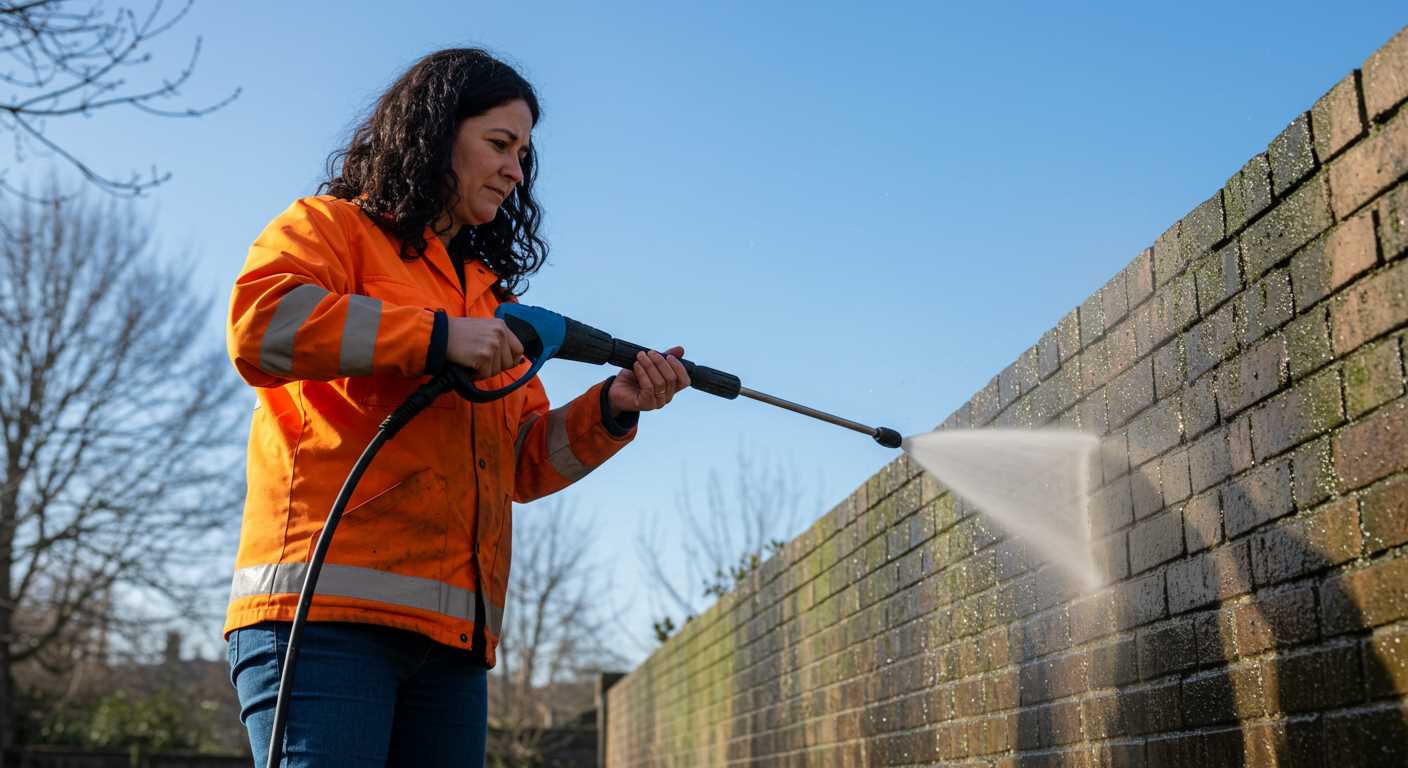

For those seeking robust cleaning solutions, opting for a model featuring a belt-driven system is an outstanding choice. This configuration offers enhanced reliability and durability compared to direct-drive alternatives, making it ideal for heavy-duty tasks in both residential and commercial settings.
The fundamental principle behind this type of apparatus is the use of a belt mechanism to transmit power from the engine to the pump. This design reduces the wear and tear on the components, ensuring a longer lifespan and less frequent maintenance. In my experience, devices utilising this system tend to operate more quietly, which can be a significant advantage in noise-sensitive environments.
When selecting a unit, I recommend considering the engine power, water flow rate, and pressure output. A higher flow rate often leads to more efficient cleaning, especially for large surfaces or stubborn stains. Additionally, the adaptability of these machines to various attachments enhances their versatility, allowing users to tackle everything from basic cleaning jobs to more complex tasks.
In my decade of working with cleaning technology, I’ve seen firsthand how these models combine power and ease of use, delivering exceptional results without the hassle of frequent repairs. Investing in such a high-caliber machine will undoubtedly pay off in efficiency and performance for your cleaning needs.
Belt Driven Cleaning Units
For optimal performance in demanding tasks, I recommend the use of belt driven cleaning units. These machines leverage a power transfer mechanism that reduces vibrations and enhances torque, making them suitable for heavy-duty applications. Unlike direct drive models, these units operate more smoothly, which can significantly prolong the life of the internal components.
Key Advantages
One standout benefit is their ability to handle extended cleaning periods without overheating. The design promotes better cooling through its superior airflow management. Additionally, they often allow for a higher horsepower capability, leading to greater efficiency in your cleaning tasks. I’ve noticed that users achieve better results in terms of dirt and grime removal thanks to the increased pressure these machines can generate.
Maintenance Tips
Regular checks on the belts for wear and appropriate tension are essential for maintaining peak performance. Ensure that the oil levels in the engine are checked frequently, as this will help in achieving smooth operation. Cleaning the air filter and maintaining a clean water intake will also contribute to longevity, preventing impurities from affecting the internal system.
Investing in a belt driven machine is an excellent decision for those who need durability and reliability in their cleaning efforts.
Understanding the Mechanics of Belt Drive Systems
The core of a belt system lies in its simplicity and efficiency. These systems convert rotational motion from the engine to the pump, typically using two pulleys connected by a robust conduit. This arrangement allows for effective power transmission while minimising wear and tear on both the engine and the pump, promoting longevity.
Key Components
Two primary elements are present: the engine and the pump, with a conduit linking them. This conduit is crafted from durable materials to withstand the high levels of stress generated during operation. The tension applied to this conduit is critical; it needs to be sufficient to prevent slippage yet not so tight that it causes excessive wear. Regular maintenance should include checking the tension and condition of the conduit, replacing it if any signs of fraying or damage are noted.
Benefits of the System
This mechanism provides numerous advantages. The option to utilise lower RPMs on the engine translates into quieter operation, making it more suitable for various environments. Additionally, it leads to reduced fuel consumption and lower emissions, aligning with sustainability practices. Power is distributed evenly, enhancing operational capacity during intensive tasks. Overall, knowing these mechanics helps in making informed decisions when selecting or maintaining equipment.
Comparing Belt Drive to Direct Drive Pressure Washers

Choosing between these two systems hinges on specific application needs. If you’re after durability and heavy-duty performance, the first option shines. It’s built for continuous use, making it ideal for commercial tasks or frequent cleaning jobs. The robust mechanism allows for effective operation over extended periods without overheating.
On the flip side, the direct connection model is perfect for light-duty tasks. It often comes in a more compact and lightweight design. This offers greater portability, allowing for easy movement around residential spaces. It’s user-friendly, making it suitable for homeowners and moderate-use scenarios.
Performance and Longevity
The longevity of the drive system varies significantly. The first type often features a longer lifespan due to reduced wear and tear on key components. Its construction helps absorb vibrations, which contributes to less stress on the motor. Conversely, direct connection types may experience quicker component fatigue, especially under intense conditions.
Maintenance Requirements
Maintenance needs also differ. Regular checks and servicing for the belt-driven system are essential but less frequent compared to its counterpart. This type generally requires fewer replacements of parts over time. Direct systems, while easier to manage initially, might need more frequent attention and replacements under high usage.
Ultimately, the choice should align with your intended use. If heavy-duty cleaning is on the agenda, opt for the more robust option. For casual, everyday use, a simpler model will suffice.
Advantages of Using a Belt Drive System for Power Cleaners

Choosing a power cleaner with a belt-driven system offers distinct benefits that enhance performance and longevity. Firstly, this configuration typically provides superior torque, making it more capable of handling tougher cleaning tasks with ease. The increased power translates to a greater water flow rate, enabling users to complete jobs more efficiently.
Longevity and Maintenance
The design of a belt-driven system minimises wear and tear on critical components. This arrangement prevents direct transmission of force from the engine to the pump, thus reducing stress and extending the life of internal parts. Regular maintenance becomes less demanding, as these units are generally more resilient to mechanical failures over time.
Noise Level Reduction

In operation, equipment utilizing a belt-driven setup tends to be quieter. The belt absorbs vibrations, leading to a more pleasant user experience while minimising disturbances to the surrounding environment. This makes such models particularly favourable for residential areas or during noise-sensitive hours.
Common Applications for Belt Drive Pressure Washers
Heavy-duty cleaning tasks across various industries often require powerful and reliable equipment. These machines excel in several key areas:
- Industrial Cleaning: Ideal for factories, warehouses, and manufacturing plants where oil, grease, and grime accumulate. The high PSI effectively tackles tough contaminants.
- Vehicle Maintenance: Perfect for automotive workshops and garages. They swiftly remove dirt and grime from cars, trucks, and heavy machinery, saving time and enhancing appearance.
- Surface Preparation: Essential for prepping surfaces for painting, staining, or sealing. The intense water pressure ensures thorough cleaning by eliminating any contaminants that could interfere with adhesion.
- Property Maintenance: Beneficial for maintaining commercial properties, including restaurant patios, sidewalks, and exterior walls. They ensure these areas are clean and presentable.
- Construction Cleanup: Useful for clearing up after construction projects. Effective at dealing with construction debris, mud, and dust that accumulate during building or renovation work.
- Deck and Patio Cleaning: Efficient for restoring outdoor living spaces. The power aids in removing algae, mildew, and dirt from wooden decks and stone patios.
Choosing the right equipment for specific tasks can significantly enhance productivity and outcomes. My experience shows that understanding the unique capabilities of these machines leads to better results across various applications.
Maintenance Tips for Belt Drive Pressure Washers

Regular maintenance can significantly prolong the life of your cleaning machine. Start by checking the oil levels in the engine. Ensure the oil is clean and topped up, as inadequate lubrication can lead to overheating and damage.
Fuel System Care

Always use fresh fuel. Stale petrol can cause starting issues. Consider using a fuel stabiliser if the machine will be unused for an extended period. Additionally, inspect the fuel filters for any clogs and replace them when necessary.
Cleaning and Inspection
After every use, rinse the nozzle to remove any debris or detergent residue. Regularly clean the high-pressure hose and check for any wear or leaks. Damaged hoses should be replaced immediately to prevent operational issues.
| Task | Frequency | Notes |
|---|---|---|
| Check oil level | Every use | Use recommended oil type |
| Inspect fuel system | Monthly | Replace filters as needed |
| Clean nozzles | After every use | Prevent clogs |
| Check hoses | Monthly | Replace if damaged |
| Clean external surfaces | After every use | Maintains appearance |
Additionally, inspect the pump and belts regularly for any signs of wear or damage. Tighten any loose connections to avoid leaks. Following these tips ensures reliable performance and extends the lifespan of your equipment.
Choosing the Right Belt Drive Pressure Washer for Your Needs

Consider your specific cleaning requirements before making a decision. Are you tackling large, commercial jobs that demand extended use, or are you focused on smaller residential tasks? Understanding the nature of your projects is crucial in selecting an appropriate unit.
Here are factors to think about:
- Water Flow Rate: For heavy-duty cleaning, look for models with higher flow rates (measured in litres per minute). This increases efficiency for tasks like stripping paint or cleaning large machinery.
- Pressure Output: Ensure the model delivers sufficient pressure (measured in bar or PSI) for your intended use. Higher pressure is necessary for tough grime, while moderate pressure suffices for light cleaning.
- Portability: Assess the weight and mobility features. If frequent relocation is expected, lighter units with sturdy wheels can save time and effort.
- Power Source: Decide between electric and petrol options. Electric units are quieter and suitable for indoor use, while petrol versions typically offer greater power and mobility for outdoor tasks.
- Build Quality: Opt for models with robust frames and components. Durable construction ensures longevity, especially when handling challenging jobs.
After determining these needs, research various brands and models. Look for customer reviews to gauge reliability and performance. Testing several options before purchase can help you find the right fit for your specific tasks.
Lastly, consider your budget. Allocate funds not just for the washer itself but for essential attachments and maintenance tools that optimise performance and ensure longevity. A well-informed purchase leads to effective results and satisfaction in your cleaning efforts.






